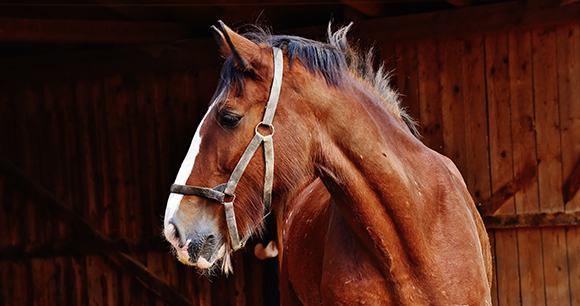
Washington, DC—The Animal Welfare Institute (AWI) commends lawmakers from the US House of Representatives for including the Horse Transportation Safety Act (HTSA) in transportation legislation unveiled last week. The HTSA would ban the use of unsafe double-deck trailers to haul horses in interstate commerce.
By the end of this month, the House Transportation and Infrastructure Committee is expected to pass the INVEST in America Act—a nearly $500 billion, five-year package to set federal transportation policies and reauthorize a wide array of programs.
Included in the funding bill is the HTSA (H.R. 1400), which aims to ensure that horses are not subjected to dangerous and inhumane conditions during transport. AWI has long spearheaded the passage of the HTSA to bar transporting horses in vehicles that endanger both animals and motorists. The bill, led by Representatives Steve Cohen (D-TN), Peter King (R-NY), Dina Titus (D-NV), and Brian Fitzpatrick (R-PA), currently has 132 cosponsors—the highest number of congressional supporters since it was first introduced in 2008.
A vote by the full chamber on the House surface transportation package is expected later this summer; Congress is aiming to approve the bill before a September 30 deadline.
“Horses deserve to be transported in as humane a manner as possible,” Cohen said. “Double-deck trailers do not provide adequate headroom for adult horses, and accidents involving double-deck trailers are a gruesome reminder that the practice is also dangerous to the driving public. I’m pleased the Horse Transportation Safety Act has been incorporated in the ambitious INVEST in America Act.”
The impetus for the HTSA was a horrific accident in 2007 in which a double-deck trailer carrying 59 Belgian draft horses overturned in Wadsworth, Illinois, killing 19 horses. The tragedy spotlighted the reckless practice of cramming horses into trailers designed for much shorter and stouter animals, such as cattle and pigs.
The American Veterinary Medical Association recommends at least a 7- or 8-foot clearance for horses; double-deck trailers usually have a ceiling clearance of 4 feet 7 inches to 5 feet 5 inches, which typically does not allow horses to stand comfortably or even fully extend their heads and necks inside. Moreover, because horses cannot maintain proper balance, they are at higher risk of injury from falling. Horses can also sustain injuries while being loaded onto the steep ramp of a double-deck trailer.
The U.S. Department of Agriculture banned the use of double-deck trailers to transport equines to slaughter in 2011, citing concerns that such vehicles could prove “extremely top-heavy and prone to tipping.” Although no horse slaughter plants currently operate in the United States, tens of thousands of American horses are shipped across the border each year to Canada and Mexico to meet a grisly end in foreign slaughterhouses that kill horses for human consumption.
When the USDA issued its regulations, the department was unequivocal in its findings that double-deck trailers are inappropriate and unsafe for transporting adult equines, in large part because horses are far more likely to be injured in double-deck trailers than in single-deck trailers that can better accommodate their height and overall size. The HTSA’s provisions would finally close the loophole that allows non-slaughter-bound horses to travel across state lines in a motor vehicle containing two or more levels stacked on top of one another.
“It’s absurd that a practice deemed too inhumane for horses sent to slaughter remains legal for other horses being moved around the country,” said Joanna Grossman, Ph.D., equine program manager for AWI. “No horse should be forced to endure a difficult and long journey in a vehicle known to cause injuries to the animals inside while endangering others on the road. We are grateful to Congressman Cohen for his steadfast leadership toward seeing the Horse Transportation Safety Act reach the finish line.”
Margie Fishman, (202) 446-2128, [email protected]